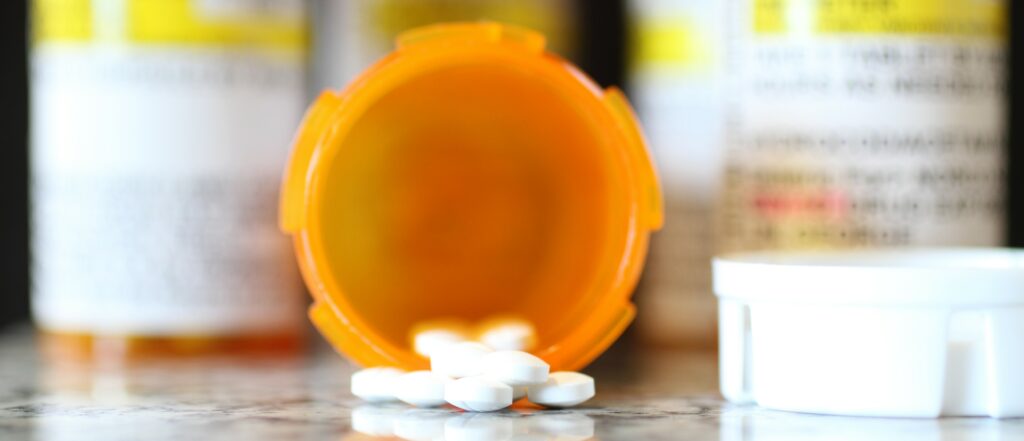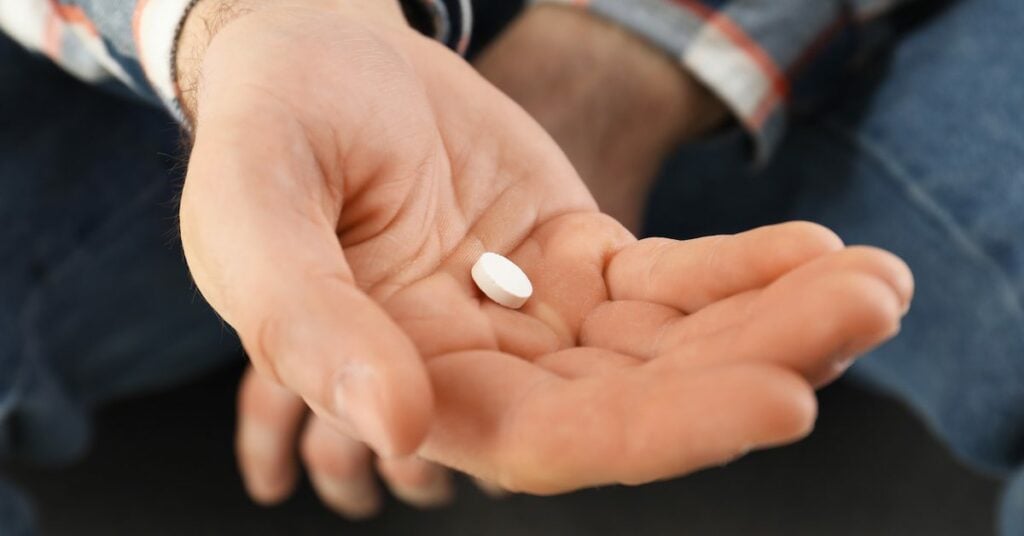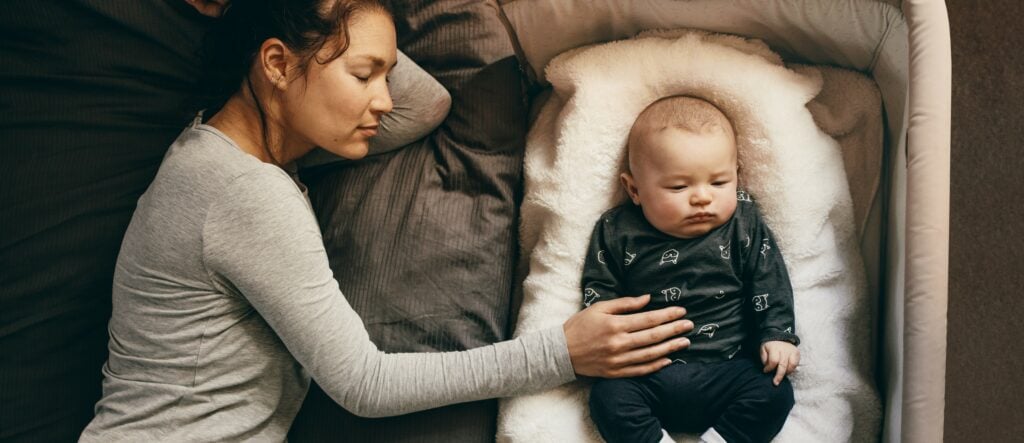Depression: Causes, types, diagnosis, and treatment
Reviewed by Stephanie Steinman, PhD, CSAC

What is depression?
Depression is often described as the world’s most common mental health disorder. It manifests in feelings of sadness, loneliness, emptiness, and hopelessness that interfere with your daily life. It can impact your work, your relationships, your energy, and your ability to function.


Globally, depression affects approximately 280 million people.1 According to the US Department of Health and Human Services, nearly 8% of American adults and 16% of children ages 12 to 17 had at least one major depressive episode in 2019.2 Those numbers increased in 2020 during the COVID-19 pandemic.3
Depression vs. sadness
We feel sadness after loss, disappointment, and other life challenges. Sad feelings are typically transient, meaning they resolve themselves over time. Many of us find some relief from sadness in positive experiences, like encouraging words from a friend or time spent with loved ones.
Depression, meanwhile, is a persistent, longer-lasting state that changes the way you live. It’s hard to interrupt depression without professional help.
If you’re overwhelmingly sad for longer than two weeks, you may be depressed. (Learn more about how to tell the difference.) With depression you may also feel apathetic, empty, hopeless, or uninterested in things you once enjoyed—or you may feel like a “fog” is clouding your life.
Depression vs. grief
Grief is a natural response to loss, death, or unexpected change. It shares many symptoms with depression, and you can experience grief and depression at once. Sometimes grief triggers depression, and people with depression may experience grief after a loss.
Despite their similarities, grief and depression are different mental states. A specific event, like a death or other loss, triggers grief. The symptoms of grief usually fade over time but can resurface in certain situations, like anniversaries or holidays.
Depression, on the other hand, may or may not be triggered by a specific event or circumstance. Its symptoms are unrelenting and don’t usually improve over time without treatment. Treatment can help grief resolve more quickly, but treatment is typically necessary for depression to resolve at all.
Depression vs. anxiety
Depression and anxiety are two separate mental health disorders, though you can experience both at once. In anxiety disorders, excessive worry impacts your life, while depression generally involves feelings of emptiness and hopelessness.
Signs and symptoms of depression
Depression can show up differently in different people, and you may experience different symptoms depending on the type of depression you have.
Common signs of depression include:
- Feelings of sadness, loneliness, emptiness, or hopelessness
- Loss of interest in activities that previously brought happiness, pleasure, or joy
- Low energy or constant fatigue
- Difficulty sleeping (insomnia), or oversleeping (hypersomnia)
- Loss of appetite, resulting in weight loss; or overeating, resulting in weight gain
- Decreased sexual desire
- Unexplained physical pain
- Difficulty concentrating or remembering
- Feelings of irritability or frustration
- Trouble with decision-making
- Feelings of anxiety or restlessness
- Thoughts of guilt, worthlessness, or death
- Thoughts of suicide
If you’ve had one or more of the above symptoms for at least two weeks, you may want to seek professional help for depression.
According to the Substance Abuse and Mental Health Services Administration (SAMHSA), a person has had a major depressive episode (MDE) if they’ve felt depressed for at least two weeks and have also struggled with “sleeping, eating, energy, concentration, self-worth,” or repeated thoughts of death or suicide.4
If you’re in crisis or having thoughts about suicide, call or text the 988 Lifeline at 988 for free, confidential support 24 hours a day, 7 days a week.
Types of depression
Depression comes in many different forms, ranging in length and severity. It can look different if you have it along with another mental health issue, such as obsessive-compulsive disorder (OCD) or bipolar disorder.
Common types of depression include:
- Major depressive disorder (MDD): Also called “clinical depression,” MDD is one of the more serious forms of depression. It usually occurs as an episode that lasts weeks, months, or years.
- Persistent depressive disorder (PDD): Formerly called “chronic major depression” or “dysthymia,” PDD is considered more moderate in terms of symptoms, but it lasts longer than MDD. To be diagnosed, you must have depressive symptoms for at least two years.
- Psychotic depression: This severe form of depression combines MDD and psychosis (for example, hallucinations or delusions). It often requires hospitalization.
- Postpartum depression: New parents may go through postpartum depression after their baby arrives. It’s usually associated with the person who gives birth, but biological fathers and adoptive parents can have it too.
- Seasonal affective disorder (SAD): Seasonal change can cause depression. Seasonal affective disorder usually occurs during colder, darker seasons like fall and winter, with symptoms easing in spring and summer.
How does depression progress?
Major depressive disorder, also known as clinical depression, is categorized in one of three stages: mild, moderate, or severe. This continuum doesn’t move in a straight line: For instance, you don’t need to have had mild depression first to be diagnosed with a moderate form. Everyone’s experience of depression is different.
- Mild depression may not sound too bad, but it’s still serious enough to interfere with your daily life. You may notice a loss of interest in your favorite activities or a general feeling of hopelessness. It may be difficult to eat or sleep. You may be irritable or fatigued, and you might have unexplained physical pain or struggle with making decisions.
- Moderate depression, like mild depression, affects your daily functioning—but in addition to affecting your personal life, it impacts you in other ways. Your performance at work may slip noticeably, or you may forget school assignments. Friends and family may notice a change in your behavior and express concern.
- Severe depression is the most serious form of depression. You may find it nearly impossible just to get out of bed in the morning. You may struggle with suicidal thoughts and find it hard to take care of yourself. Severe depression can sometimes be accompanied by other mental health problems, like psychosis.
Causes of depression
There’s no single or universal cause of depression, but certain factors can increase your risk:
- Biochemistry: The ways our brains develop and work affect our experience of the world. Generally speaking, chemical imbalances in the brain seem to be related to depression. In addition, certain hormones can affect your risk.
- Genetics: If a relative has been diagnosed with depression or another mental health condition, you may be at increased risk.
- Trauma: Abuse, loss, suffering, and other forms of trauma may trigger a depressive episode.
- Illness: Struggling with a chronic disease or disorder can increase your risk for depression. This includes physical illnesses, such as cancer, as well as other mental health disorders, like posttraumatic stress disorder (PTSD).
- Medications: Certain medications—including beta blockers, corticosteroids, and benzodiazepines—may trigger or worsen depressive symptoms.
- Substance abuse: Alcohol or drug abuse can increase your risk. One study found that nearly 64% of people who were dependent on alcohol also had depression.5
- Lack of identity support: According to the American Psychiatric Association (APA), people who identify as LGBTQIA+ are 2.5 times more likely to experience depression than people who identify exclusively as heterosexual.6 Similarly, many people in marginalized racial and ethnic groups face discrimination, which is associated with increased depression risk.7
How is depression diagnosed?
Certified health professionals can diagnose depression. If you think you may be depressed, a good first step is to speak with your primary care physician (PCP). They can evaluate your symptoms and conduct lab tests to rule out similar-looking conditions, like hypothyroidism. Your doctor may or may not give you a formal mental health diagnosis, and they may also refer you to a psychologist or psychiatrist.
You may decide to get help from a therapist or psychiatrist directly, instead of going through your PCP. A qualified therapist can evaluate your mental health and give a professional diagnosis; a psychiatrist can not only diagnose you, but also prescribe medication if you need it.
Even if your therapist or psychiatrist doesn’t diagnose you with clinical depression, they can offer treatment options for other mental health problems you may face.
Strategies for managing and treating depression
Whether your depression is mild, moderate, or severe, help is available. The best way to help your depression is to get professional treatment: therapy, medication, or a combination of both. Depression isn’t a permanent state—treatment can reduce its effects or help you overcome it entirely. No treatment option is inherently better than another.
Speak honestly with your therapist or psychiatrist about any reservations you have about treatment or past negative experiences with therapy. You may need to try different courses of treatment to find what works best for you.
Common types of therapy
Cognitive behavioral therapy (CBT)
The goal of cognitive behavioral therapy (CBT) is to change your thoughts (cognition) in order to change your actions (behavior). CBT is based on the premise that negative beliefs or thoughts drive your negative feelings and behavior. A therapist works with you to identify patterns in your thoughts and behavior that contribute to your current state of mind, including patterns resulting from trauma or stress.
Interpersonal psychotherapy
Depression can affect all aspects of your life, including your relationships with others. In interpersonal psychotherapy (IPT), your therapist helps you identify your interpersonal problems and develop ways to better connect and communicate with others.
Eye movement desensitization and reprocessing (EMDR)
EMDR is a form of therapy developed for people with posttraumatic stress disorder (PTSD). Some studies indicate that it can also help people with depression.8
EMDR allows you to safely experience and process traumatic memories that may underlie your depression. Using repetitive visual or auditory cues, a therapist helps your brain stay grounded in current reality while you work through memories, which helps limit the distress of revisiting trauma.
Common types of medical treatment
Antidepressants
Your doctor or psychiatrist may prescribe antidepressants to help you manage symptoms of depression. They may also prescribe other medications to enhance or lessen the side effects of antidepressants, depending on how your body experiences the medicine.
Antidepressants are a valid, healthy way of addressing the effects of depression. Taking them doesn’t make you weak or less “yourself.” They can help your brain and body heal.
It may help to think of antidepressants the same way you’d think about taking a decongestant for allergies or heartburn medication after a meal. Those other medications aren’t cause for shame, and antidepressants shouldn’t be either.
Electroconvulsive therapy (ECT)
During electroconvulsive therapy (ECT), you’re placed under general anesthesia while your brain receives stimulation via small, safe electric currents. The currents trigger a brief seizure that can help your brain chemistry.
ECT may sound frightening, but it’s a safe and well-studied procedure. It can particularly help if you have severe depression that isn’t responding to other therapies.
At-home strategies
In addition to professional treatment, you can introduce new habits at home to help relieve your symptoms. Keep in mind, though, that at-home strategies aren’t cures. Exercising more and eating better may be healthy choices, but they won’t cause you to “snap out of” depression. Depression is a condition that requires real medical treatment, so at-home strategies are most effective when paired with professional help.
Common at-home strategies include:
- Exercising regularly
- Eating healthy meals
- Eating regularly to avoid undereating or overeating
- Establishing a regular sleep schedule
- Avoiding alcohol and drugs
- Decreasing stress
- Investing in strong relationships with family and friends
- Establishing healthy boundaries
- Going for a walk outside
- Regulating your social media intake
- Trying new hobbies
When to get treatment for depression
The best way to help your depression is with professional treatment: therapy, medication, or some combination. In general, you should look for help if your symptoms are keeping you from a healthy, productive life. That said, there’s no litmus test for seeking treatment. You can see a therapist without having any kind of formal mental health diagnosis.
Find help now
Browse our directory to find a therapist near you.
If you’re in crisis or having thoughts about suicide, call or text the 988 Lifeline at 988 for free, confidential support 24 hours a day, 7 days a week.

Sources
1 https://www.who.int/news-room/fact-sheets/detail/depression/
2 https://www.samhsa.gov/data/sites/default/files/reports/rpt29393/2019NSDUHFFRPDFWHTML/2019NSDUHFFR1PDFW090120.pdf/
3 https://www.cidrap.umn.edu/news-perspective/2020/09/depression-triples-us-adults-amid-covid-19-stressors/
4 https://www.samhsa.gov/data/sites/default/files/reports/rpt29393/2019NSDUHFFRPDFWHTML/2019NSDUHFFR1PDFW090120.pdf/
5 https://www.ncbi.nlm.nih.gov/pmc/articles/PMC3658562/
6 https://www.psychiatry.org/getmedia/552df1c0-57f2-4489-88fa-432182ce815a/Mental-Health-Facts-for-LGBTQ.pdf
7 https://www.ncbi.nlm.nih.gov/pmc/articles/PMC6390869/
8 https://connect.springerpub.com/content/sgremdr/10/2/59/
About the author
The editorial team at therapist.com works with the world’s leading clinical experts to bring you accessible, insightful information about mental health topics and trends.
Related articles

Antidepressants: How they work and what they treat
Antidepressants are usually prescribed to treat depression and other related...

Understanding antidepressant selection
With medication management playing an increasingly pivotal role in the...

Psychodynamic therapy is a form of talk therapy used to treat a range of mental...

Postpartum depression (PPD), psychosis, and related conditions
Postpartum depression is common and can interfere with your ability to care for...
